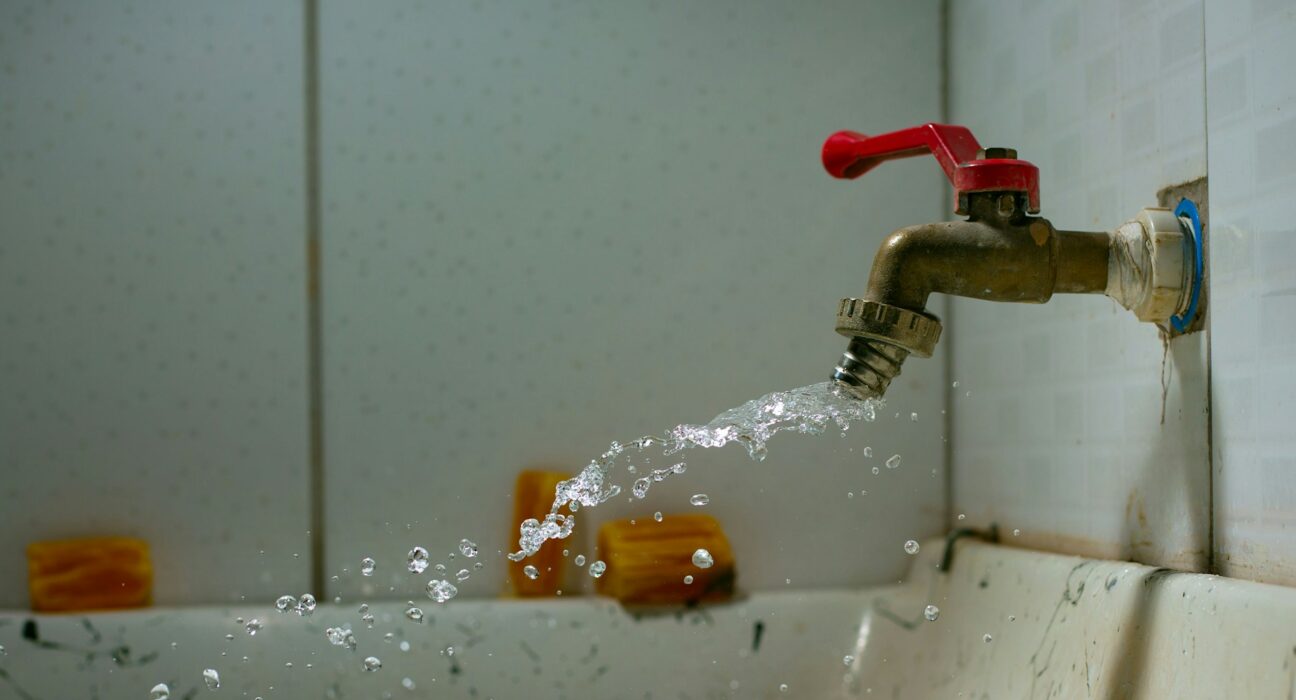Many homeowners assume their plumbing fixtures will last forever, but even the most durable faucets, showerheads, and toilets eventually need replacement. Recognizing the warning signs early can save you from costly water damage, high utility bills, and the inconvenience of sudden failures.
This comprehensive guide will help you identify when it’s time for a fixture upgrade and understand the benefits of modernizing your plumbing system. From obvious signs like persistent leaks to subtle indicators such as decreased water pressure, we’ll cover everything you need to know about plumbing replacement timing and planning.
Age and Lifespan Considerations
Understanding Fixture Lifespans
Different plumbing fixtures have varying lifespans depending on their materials, usage, and maintenance. Faucets typically last 15-20 years, while toilets can function for 25-30 years with proper care. Showerheads and sink fixtures generally need replacement every 10-15 years, especially in areas with hard water.
High-quality fixtures made from durable materials like brass or stainless steel often outlast their cheaper counterparts. However, even premium fixtures will eventually show signs of wear. If your fixtures are approaching or exceeding their expected lifespan, it’s wise to start planning for replacement rather than waiting for complete failure.
Material Degradation Over Time
Older fixtures often contain materials that deteriorate with age. Chrome plating can chip and peel, exposing the underlying metal to corrosion. Rubber gaskets and O-rings become brittle and lose their sealing properties. Internal components like valve seats and cartridges wear down from repeated use.
Hard water accelerates this deterioration process by depositing minerals that can clog internal mechanisms and corrode metal surfaces. If your home has hard water and your fixtures are showing signs of mineral buildup that can’t be cleaned away, replacement may be more cost-effective than repeated repairs.
Persistent Leaks and Water Damage
Identifying Leak Sources
Leaks are often the most obvious sign that fixtures need replacement. While minor drips from faucets might seem harmless, they can waste thousands of gallons of water annually and indicate internal component failure. Check for water stains, mineral deposits, or actual dripping around faucet bases, showerheads, and toilet connections.
Look for less obvious leak signs like water damage on walls behind fixtures, loose tiles around tubs and showers, or unexplained increases in your water bill. These symptoms often indicate hidden leaks that require immediate attention and may necessitate complete fixture replacement.
The Cost of Delaying Repairs
Ignoring persistent leaks can lead to significant water damage, mold growth, and structural issues. Water damage repair costs often exceed the price of proactive fixture replacement. Additionally, continuous leaks can damage surrounding fixtures, flooring, and walls, creating a domino effect of necessary repairs.
Insurance companies may not cover water damage from leaks that homeowners knew about but failed to address promptly. Documenting leak issues and taking swift action protects both your home and your wallet.
Decreased Water Pressure and Flow Issues
Causes of Reduced Performance
Declining water pressure often signals internal fixture problems that cleaning cannot resolve. Mineral buildup in aerators and showerheads can sometimes be cleared, but when the internal valves and passages become clogged or corroded, replacement becomes necessary.
Old fixtures may also have design limitations that restrict water flow compared to modern alternatives. If multiple fixtures in your home show decreased performance, the issue might be with your main plumbing system, but individual fixture problems typically require targeted replacement.
Impact on Daily Life
Poor water pressure affects everything from showering to dishwashing. Low-flow showerheads that once provided adequate pressure may become frustratingly weak over time. Kitchen faucets that struggle to fill pots or rinse dishes effectively reduce efficiency and increase water usage as you compensate for poor performance.
Modern fixtures are designed to provide optimal flow rates while maintaining water efficiency. Upgrading can actually improve your water experience while reducing consumption through better engineering and design.
Aesthetic and Functional Obsolescence
Style and Design Evolution
Plumbing fixtures significantly impact your home’s appearance and value. Outdated fixtures can make even well-maintained bathrooms and kitchens look dated and uninviting. Color trends change, and fixtures in avocado green or harvest gold may detract from your home’s appeal to potential buyers.
Modern fixtures offer improved ergonomics and user-friendly features that older models lack. Lever handles are easier to operate than knobs, especially for those with arthritis or limited mobility. Contemporary designs often incorporate better spout reach and height for improved functionality.
Technology Integration
Smart home technology has revolutionized plumbing fixtures. Touchless faucets reduce germ transmission and provide convenience, while smart toilets offer features like heated seats, automatic flushing, and self-cleaning capabilities. These technological advances weren’t available in older fixtures and can significantly enhance your home experience.
Water-saving technologies have also advanced considerably. Modern low-flow fixtures provide better performance than early water-saving models while meeting current efficiency standards. This home improvement approach can reduce utility costs while maintaining user satisfaction.
Efficiency and Water Conservation
Modern Efficiency Standards
Current plumbing fixtures must meet strict efficiency standards that didn’t exist decades ago. Toilets manufactured before 1994 may use 3.5 gallons per flush or more, while modern efficient models use 1.28 gallons or less. This difference can result in significant water savings for households.
Similarly, older showerheads and faucets may have flow rates of 3-5 gallons per minute, compared to modern efficient models that provide excellent performance at 1.5-2.5 gallons per minute. These improvements translate directly into lower water bills and reduced environmental impact.
Long-term Savings Potential
While new fixtures require upfront investment, the long-term savings from reduced water usage often justify the cost. Calculate your potential savings by comparing your current fixtures’ flow rates with modern efficient alternatives. Many utilities offer rebates for installing water-efficient fixtures, further reducing replacement costs.
Energy savings also contribute to long-term value. Efficient fixtures reduce hot water usage, lowering water heating costs. Over a fixture’s lifespan, these savings can offset much of the initial investment while providing improved performance and reliability.
Safety and Health Concerns
Lead and Harmful Materials
Older fixtures may contain lead or other harmful materials that pose health risks, particularly in homes built before 1986. Lead can leach into drinking water from fixture components, creating serious health hazards, especially for children and pregnant women.
Even fixtures that appear to be functioning properly may pose health risks if they contain outdated materials. Modern fixtures must meet strict lead-free requirements and other safety standards that protect your family’s health.
Bacterial Growth and Hygiene
Old fixtures with worn seals and gaskets can harbor bacteria and mold in areas that are difficult to clean. Cracked or damaged surfaces provide hiding places for germs that can affect your family’s health. Fixtures with poor water flow may not rinse away soap and debris effectively, contributing to hygiene problems.
Modern fixtures are designed with smooth, non-porous surfaces that resist bacterial growth and are easier to clean. Anti-microbial coatings and finishes provide additional protection against harmful organisms.
Planning Your Replacement Strategy
Timing and Budgeting
Strategic replacement planning helps you avoid emergencies and allows for better budgeting. Create a timeline based on your fixtures’ ages and conditions, prioritizing those showing the most concerning symptoms. Planning also allows you to take advantage of sales and rebates.
Consider grouping replacements by room or system to maximize efficiency and reduce labor costs. Replacing all bathroom fixtures simultaneously may be more cost-effective than individual replacements over time. Research warranty options and choose fixtures from reputable manufacturers with good customer support.
Professional Installation Benefits
While some fixture replacements seem straightforward, professional installation ensures proper function and prevents future problems. Plumbers can identify underlying issues that might affect new fixtures and ensure all connections meet current codes and standards.
Professional installation also protects warranty coverage, as many manufacturers require proper installation for warranty claims. The cost of professional installation is often offset by the peace of mind and long-term reliability it provides.
Making the Investment in Your Home’s Future
Replacing old plumbing fixtures is more than a maintenance task—it’s an investment in your home’s comfort, efficiency, and value. By recognizing the warning signs early and planning strategically, you can avoid emergencies while improving your daily life through better-performing fixtures.
Modern fixtures offer superior performance, enhanced safety features, and significant water savings that benefit both your budget and the environment. Whether you’re dealing with persistent leaks, decreased performance, or simply want to modernize your home, the right fixture upgrade can provide years of reliable service.
Don’t wait for complete failure to consider replacement. Learn more about fixture options and consult with plumbing professionals to develop a replacement plan that meets your needs and budget. Your future self will thank you for making these important home improvements proactively rather than reactively.







